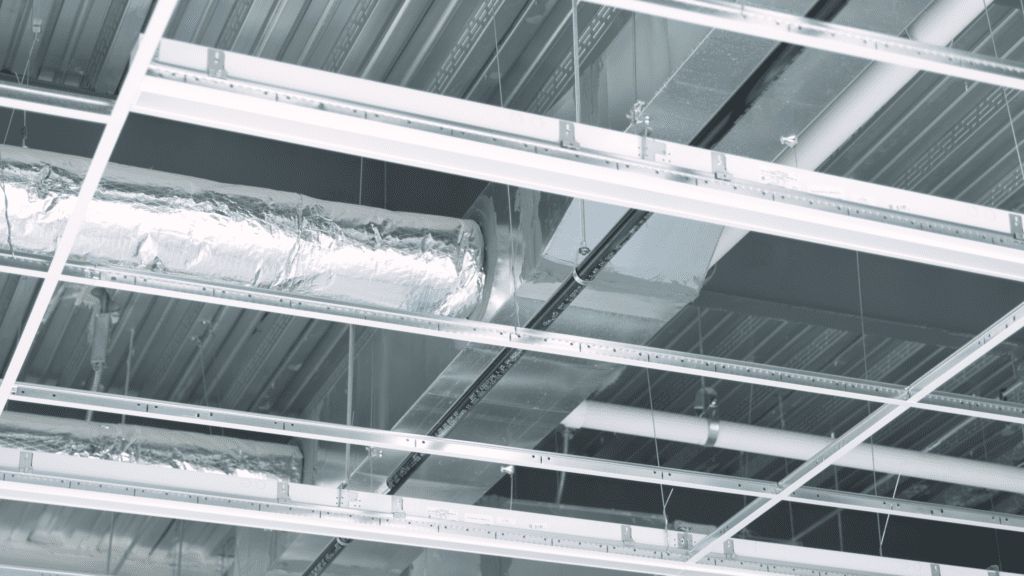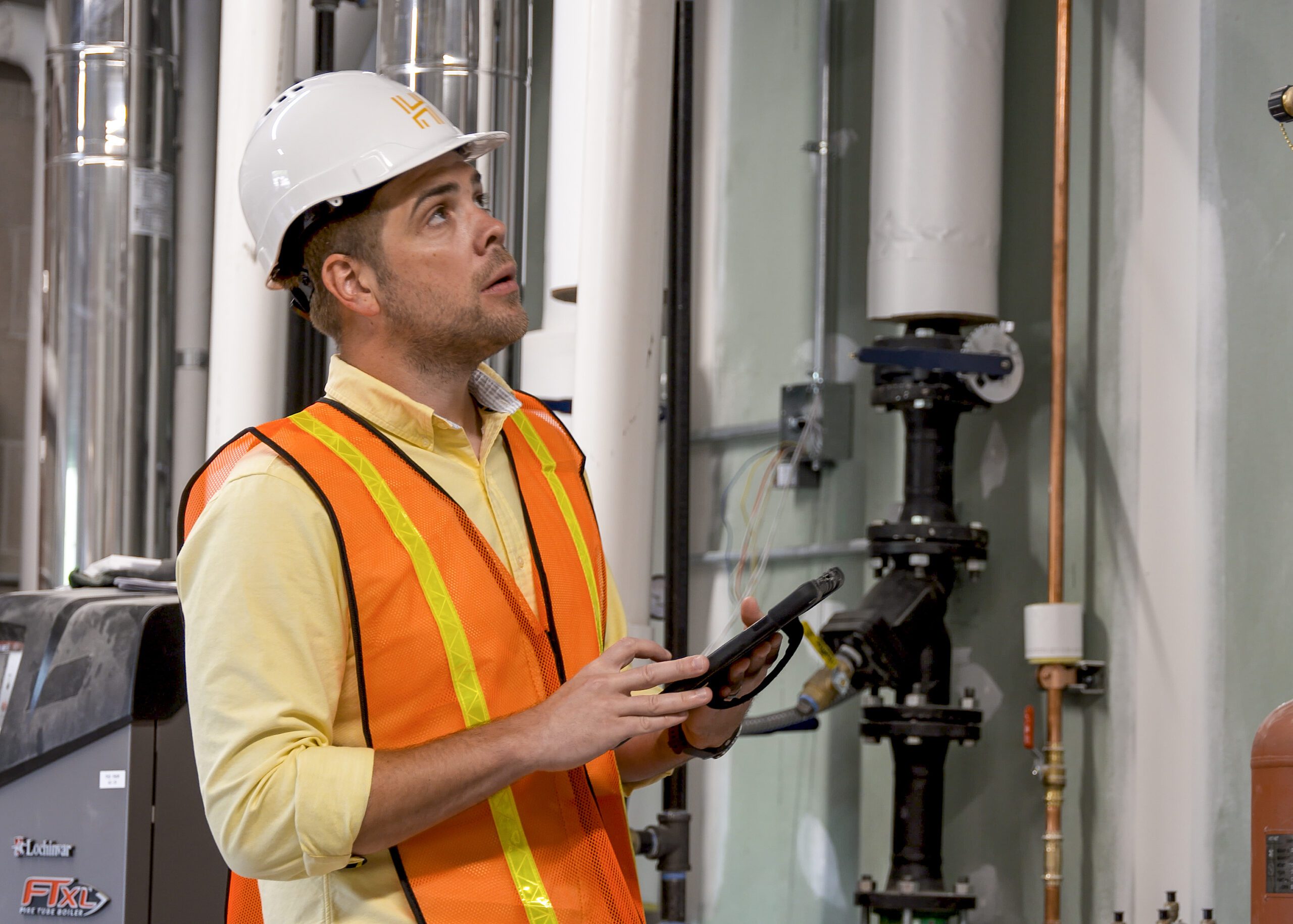Disclaimer: Harwood is not a tax consultant and/or tax expert. We’re engineers. This article is meant to shine a light on some current tax credit opportunities in the HVAC world that building owners or operators could leverage on their next project. So, please discuss your specific tax considerations with your tax professional, and we’ll stick to engineering.
Understanding Geothermal Systems and Costs
Of all of Harwood’s various engineering disciplines, you could argue that Mechanical or HVAC has the most diverse group of system types and application possibilities. Depending on the project type, the owner’s sustainability goals, the system size, and the budget of the project, there are a multitude of different HVAC systems that can be implemented into any facility. At the onset of any project, Harwood works with our clients to determine which systems are most applicable to that particular project.
During these system selection discussions, we’re often asked about emerging trends, where we see the industry going, and which sustainable building system options we’re most likely to see in the future. As the “electrification of buildings” becomes a bigger trend and carbon neutrality becomes more of a normality, one system type continues to be discussed and implemented: geothermal. With new federal tax incentives, these highly efficient and sustainable systems can help building owners achieve their sustainability goals while also being cost comparative with more traditional HVAC systems.
The Difference Between Geothermal and Traditional Systems
Geothermal systems utilize natural ground water as a heat sink or a heat source to provide heating and cooling for a building. Water is pumped through pipes in either vertical or horizontal wells, where it takes heat from the ground or rejects heat to the ground, depending on if the system is in heating or cooling mode. Traditional HVAC systems burn natural gas or utilize electric resistance to heat, and utilize a refrigeration circuit including a cooling tower or condenser fan to reject heat into the atmosphere. By utilizing a sustainable resource as a heat sink and heat source, geothermal systems can reduce energy consumption and emissions by over 70% compared to standard air conditioning equipment. Geothermal systems can utilize water-to-water heat pumps or heat pump chillers, and can even provide simultaneous heating and cooling to different parts of the building.
With simultaneous heating and cooling, rejected heat from the cooling system utilized in one part of the building can be utilized by areas or systems that require heat in other parts of the building, which is about as efficient as it gets. These geothermal heat pump systems come in all shapes and sizes for many different building and application types, but the common theme is that they are very efficient and reduce energy consumption and emissions.

Upfront Capital Expenditures: Playing the Long Game
Why aren’t geothermal heat pump systems utilized on every building if they’re so much more efficient than conventional HVAC systems? The first answer is typically the initial capital expenditure, as most projects have budgets, and these systems can be 50% or more expensive than conventional HVAC systems, depending on the systems you’re comparing. The second answer is typically real estate—not all buildings have the space available to drill the quantity of wells required to handle the building’s heating and cooling loads. There are a number of other limitations such as potentially still needing a boiler for heating in our Wisconsin climate to minimize the geothermal field’s size, the upfront cost of performing test drills to verify design conditions, the availability of drilling rigs in your area, and potential for the ground to become saturated or degradation of performance over time. While those are all potential concerns for implementing a geothermal system, the one issue that has been the biggest limiting factor has been the initial capital expenditure.
Geothermal Incentives: A Game-Changer for Your Budget
Geothermal systems are nothing new—they have been around for quite some time. They’ve always had relatively good payback periods, but recent federal tax incentives introduced in the Inflation Reduction Act have extended the clean energy tax credits, and have made these systems much more palatable and attractive to building owners. While we won’t go deep into the tax code (which is a much drier read than HVAC articles, believe it or not), the changes in the Section 48 energy Investment Tax Credit (ITC) put into effect by the IRA allows building owners to claim a tax credit for the cost of energy property placed in service, which includes geothermal heat pumps.
Currently, geothermal projects under 284 tons (1 MW) qualify for a 30% tax credit of the cost of the system when certain requirements are fulfilled due to the efficiency of these systems (larger systems are also eligible if prevailing wage and apprenticeship requirements are met). Additionally, another 10% tax credit can be achieved if the system incorporates domestically manufactured products. There is yet another 10% tax credit available for Energy Communities, which are developments in areas and communities that have been sites of legacy energy production. As not all communities are eligible for that last 10%, the focus locally has been that building owners can achieve a tax credit of up to 40% of the cost of the installation of the geothermal system.
The cost of installation includes anything associated with the geothermal system, so it can include all of the HVAC components, such as pumps, heat pumps, piping, the bore field, and controls, but also can include the electrical components required to power the system (as well as any other components required by the system). There are also other federal tax incentives through EP Act 179D as well as accelerated depreciation that can help with the costs of these systems.
Reap Cost Savings and Eco Rewards: Geothermal Tax Credits Explained
What does that mean for building owners? While the tax credit is not realized until the tax year following the completion of the project, a 40% tax credit for the cost of the system can make a system that was previously not affordable for an owner much more affordable, provided the initial capital is available until the credit comes through. This means building owners can implement a much more efficient heating and cooling system for similar up-front costs, and reap the benefits of the reduced energy consumption and emissions for the lifetime of the building. The IRA also now allows tax-exempt entities to also receive this Section 48 ITC benefit, which was not the case in the past. However, since they are tax-exempt, the credit comes in the form of a payment from the federal government in lieu of a tax credit. This change opens up many more facilities and building owners to reap the benefits of the incentive.
At Harwood, we strive to listen to our clients and customers to design systems that meet their varying needs. While they may not be the right solution for every building, geothermal heat pump systems are one way for our clients to achieve emissions and energy consumption goals for the life of their facility. These new tax incentives make these systems possible for many building owners that may not have looked to geothermal in the past. Whether you are interested in geothermal systems or any other HVAC system, we’d love the opportunity to discuss your next project and how we can help engineer the building systems that meet your needs.

Spencer Cook, PE
Vice President, Director of Mechanical Engineering spencer.cook@hecl.com | 414-918-1224
